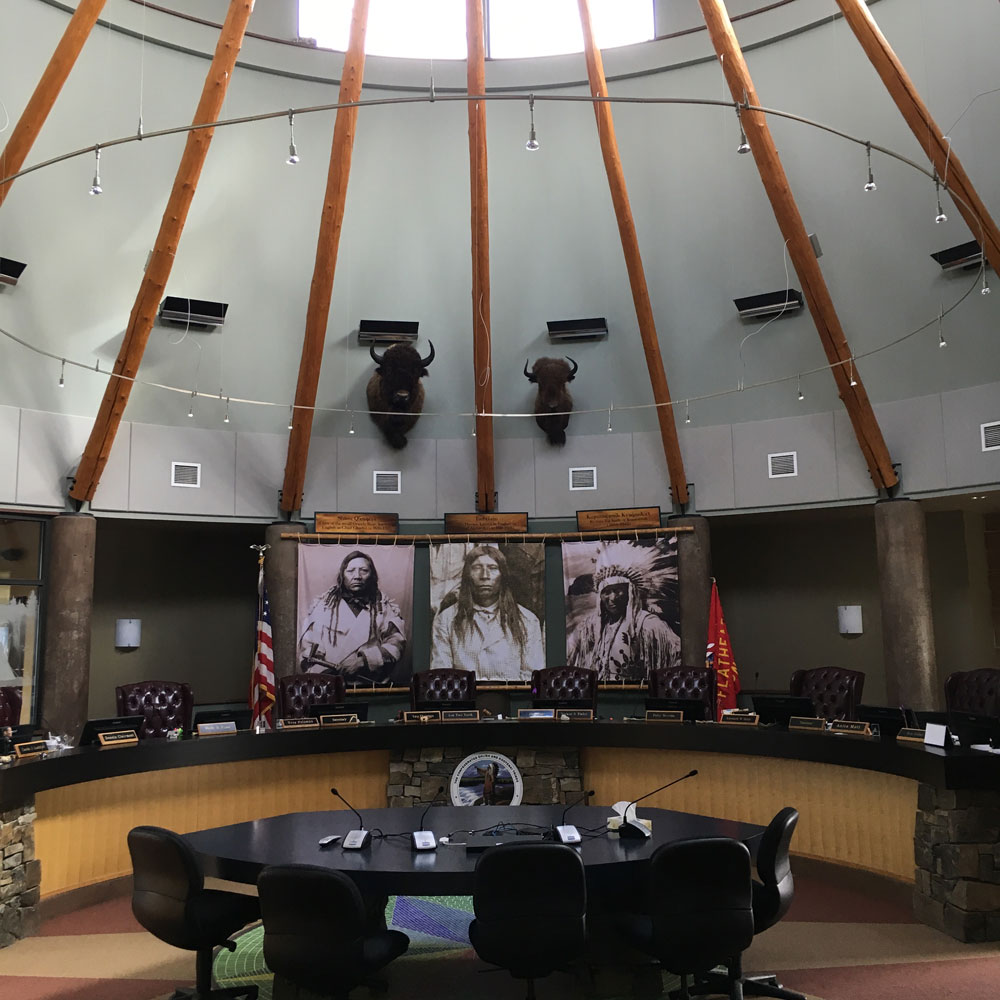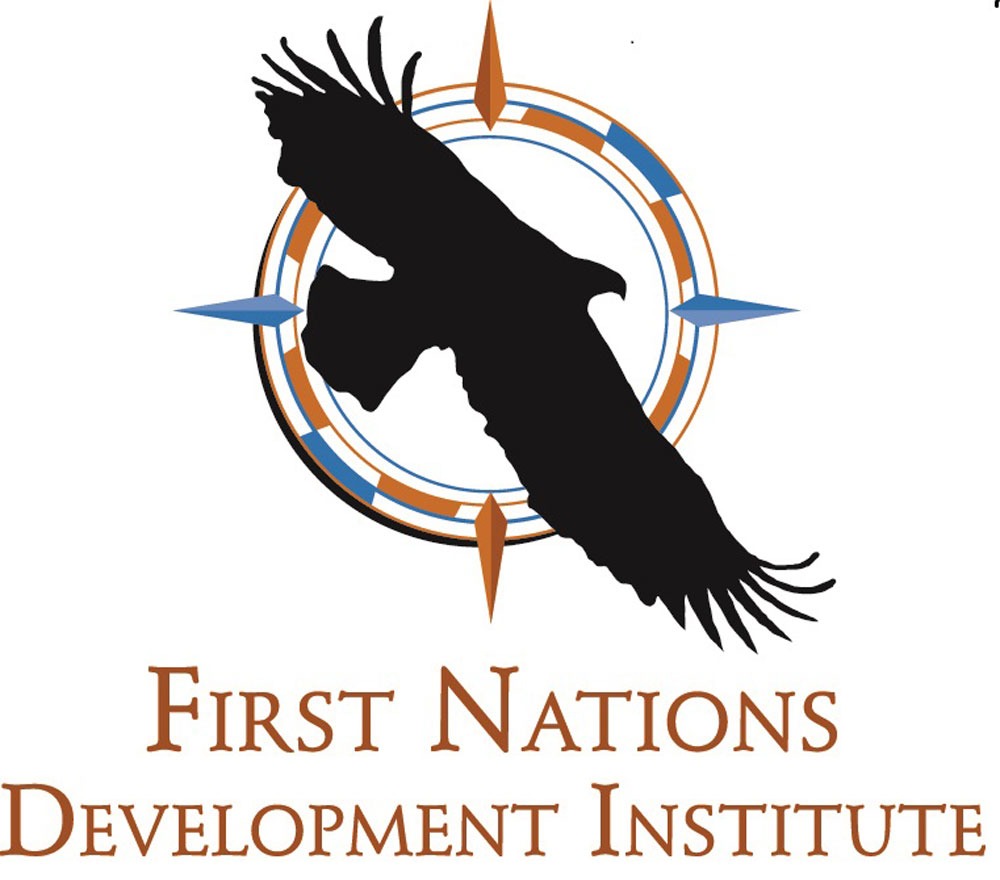
NPQ, in partnership with the First Nations Development Institute, has published a series of Native American activist writers who highlight the practices of community building in Indian Country this fall. This essay, also produced in partnership with the First Nations Development Institute, is the last of three articles that we are publishing from the perspective of philanthropy. (Additional related articles can be found at this FNDI webpage.)

How does a foundation go from not investing in Indian Country to becoming a thoughtful partner? Two key steps are to build from what you know and asking thoughtful questions. Among the most generative questions are: 1) What work is being done now in Indian Country? 2) What do current leaders feel they need to do their work; and 3) What infrastructure is in place to identify leaders who need support and to get that support into their hands?
In June 2018, the Henry Luce Foundation’s board of directors unanimously approved a new philanthropic initiative for Native American leaders. It was a momentous day: we launched a new effort to support Indigenous knowledge keepers and knowledge makers. But it was also the culmination of a two-year process of consultation and learning. That process was crucial to the development of the initiative and to its approval by the board; it was also personally transformative for me and my colleagues.
In March 2016, the Luce Foundation’s board asked for a proposal for a new grantmaking initiative. We had not launched an initiative outside of our established programs for several years. The horizon of possibility was broad—but we had a few limitations. First, of course, we had to design an initiative that was consistent with our mission and philanthropic legacy. Second, our funds were modest; our initiative had to be designed to make effective use of these monies.
In the end, we decided on a fellowship program for intellectual leaders within a particular community. The Foundation has had extensive experience with fellowship programs for aspiring leaders over its history and recognizes fellowships as a high-impact philanthropic strategy. Focusing on leaders who were producing knowledge for the benefit of a community spoke to the Foundation’s mission to promote the production and dissemination of knowledge.
I mention our starting point because I believe it was key to the successful development of our initiative. Foundations need to be true to their traditions as they develop new work. This sounds like a prescription for conservatism and continuity in philanthropy. It can be; I prefer to see it as a challenge to think expansively about mission and goals and how they might be pursued.
For the Luce Foundation, we were able to employ a familiar form, the fellowship, in support of purposes—strengthening leadership and investing in knowledge production and dissemination—to which we had a longstanding commitment. What was new to us was the community on which we chose to focus. We considered communities defined by geography, legal status, ethnicity, and religion. In the end, we decided to focus on Native American communities. For several reasons, Indigenous communities seemed as if they might be ideal partners.
That, though, was a guess made from an office building in New York by non-Native people with precious little knowledge or experience. How could we hope to develop a new initiative focused on a community about which we knew far too little and with whom we had few relationships?
Clearly, we had to educate ourselves, but that was a daunting prospect. After all, there are more than 570 federally recognized tribes and Alaska Native villages located in 35 states—and scores more urban American Indian communities and unrecognized tribes. I fear that the vastness and diversity of Indian Country dissuades many foundations from working with Indigenous communities. It shouldn’t, though. Foundations don’t need to become experts. Indian Country is filled with experts—Indigenous people with deep knowledge about leadership, about the needs of their communities, and about the individuals and organizations that are making a difference.
The challenge facing foundations is to listen carefully and with an attitude of humility. We do this routinely in other fields: we ask the cancer researcher to explain her work; we ask the school superintendent to help us understand the district she oversees. So, too, with Indian Country: we don’t know, and so we must ask, honestly and respectfully. We shouldn’t aspire to expertise; instead, we should identify the partners and advisors with the expertise to help us shape and carry out our philanthropic initiatives.
Finding the right partners requires effort, but it’s far from impossible. It requires identifying what the foundation needs to learn to move its work forward. In the Luce Foundation’s case, we felt we needed to understand three things:
- What kinds of work were knowledge leaders doing in Indian Country?
- What did those leaders feel they needed to do their work?
- What infrastructure existed to identify leaders who needed support and to get that support into their hands?
Because we wanted to support individual leaders, both local and national, we needed to network our way to the people and organizations that could provide us the insights we were seeking. The National Congress of American Indians maintains an extensive directory of Indigenous organizations with a wide range of subject focus areas. Additionally, Candid and Native Americans in Philanthropy have created a web resource that provides extensive information about foundations supporting Indigenous causes and their grantees. Foundations should also consider contacting colleagues at the Bush, Northwest Area, Kellogg and NoVo foundations, and at Margaret A. Cargill Philanthropies. All have had sustained engagements with Native communities and organizations and can offer advice.
Sign up for our free newsletters
Subscribe to NPQ's newsletters to have our top stories delivered directly to your inbox.
By signing up, you agree to our privacy policy and terms of use, and to receive messages from NPQ and our partners.
In our case, we reached out first to individuals at well-known Indigenous organizations, as well as to a few foundations. We started with leaders like Kevin Gover (Pawnee), the director of the National Museum of the American Indian; Brenda Child (Red Lake Ojibwe), a historian at the University of Minnesota and then-president of the Native American and Indigenous Studies Association; and Michael Roberts (Tlingit), president of First Nations Development Institute.
These early conversations were informative. But perhaps more important, we were introduced to individuals and to organizations that we did not know. Kevin directed us to Jim Enote (Zuni), a farmer and museum director; Brenda suggested a visit to the Mille Lacs Ojibwe nation to meet a group of language program leaders; Michael and his colleague Raymond Foxworth (Diné) sent us to Carnell Chosa (Jemez Pueblo) at the Leadership Institute of the Santa Fe Indian School.
Over time, our network grew, through introductions and research, to include an educator from the Salish-Kootenai nation, the head of a community foundation in Hopi, an Oglala Lakota activist working in Pine Ridge, a tribal college president in Washington State, and many more. Altogether, we met or spoke with some 65 individuals and groups across Indian Country.
From these conversations, we began to answer the questions we had posed. We learned, first and perhaps most importantly, that those with whom we met thought the initiative could be valuable to individual leaders, to Native communities, and to Indian Country generally. In other words, the initiative—if structured and managed appropriately—would be welcome.
We learned that if we wanted to support the Native knowledge makers and knowledge holders who were important in and to their communities, then we shouldn’t focus our resources on the fields and modes of expression that were most familiar to us, but rather on those that mattered most to knowledge makers and their communities. And we needed to accept that the products of their work might not be able to be shared widely—or even outside their community. Certainly, we needed to accept that the Foundation couldn’t lay claim to or exercise control over the knowledge work of these leaders.
We also learned that these knowledge makers and knowledge holders might not resemble the knowledge makers we traditionally supported. They might not have advanced degrees or formal titles, and their needs might be very different. Instead of sabbatical support or travel funding, they might need access to a grantwriter, to childcare, or to space and materials. Our initiative needed to be flexible and adaptable, providing the particular kinds of support needed by the particular kinds of leaders valued by communities.
Finally, we learned that, even after spending a great deal of time educating ourselves, we had neither the knowledge nor the right to identify and evaluate the work of Indigenous leaders by ourselves. We needed a partner with experience and credibility in Indian Country to manage the initiative on our behalf. That partner would circulate news of the initiative and the invitation to apply to leaders working at the national, regional and community levels, and in fields ranging from art to medicine to language to religion. We also needed a diverse advisory board of Native knowledge makers who would do the important work of evaluating leaders for support.
These learnings ultimately enabled us to finalize the design of the initiative, to present it to our Board for approval, and to find a partner to work with us to implement what became a fellowship program for Indigenous knowledge makers. But the travel we undertook and the conversations we initiated were not simply instrumental; they didn’t only help us answer practical questions about grantmaking strategy and program design.
The act of journeying to a place, of meeting in another’s home or homeland, of struggling to understand how place has shaped community and culture, of building relationships face-to-face, of making mistakes and disagreeing…these lived phenomena created the conditions for trust, instilled a feeling of empathy, and produced learnings of a much different character than reading or emailing or even speaking by phone can.
Given the Luce Foundation’s aspiration to create an initiative that would address the very specific needs of Indigenous leaders seeking to serve their communities, it was essential to us that we learn in these ways. And our initiative is better for it. But I would also suggest that the recipients of our funding—not just the Indigenous leaders who will benefit from this initiative but all of our grantees—deserve to be engaged with in these ways, and that we have an obligation to open ourselves up to these other varieties of learning.
Time and other resources are limited, of course. Over two years, I was able to meet with only a minuscule fraction of the knowledge makers and knowledge holders engaged in important work in Indian Country. What matters most, though, isn’t the number of meetings or hours of conversation, but opportunities for sustained, serious, mutual listening and learning. Indigenous people and communities deserve that—and so do our foundations.
Sean Buffington is vice president of the Henry Luce Foundation, a private grantmaker based in New York City. For 80 years, the Luce Foundation has sought to enrich public discourse by promoting innovative scholarship, cultivating new leaders, and fostering international understanding.








